Understanding the Role of ABA in Enhancing Impulse Control
Applied Behavior Analysis (ABA) is a well-established therapeutic approach that has shown significant promise in helping individuals develop better impulse control. This article explores how ABA techniques are utilized to manage impulsive behaviors, especially in children with autism spectrum disorder (ASD), and highlights the strategies, effectiveness, and broader implications of this therapy. Structured environments, positive reinforcement, and skill-building are central to ABA’s success in fostering emotional regulation and social competence.
The Importance of Impulse Control in Developmental and Social Contexts
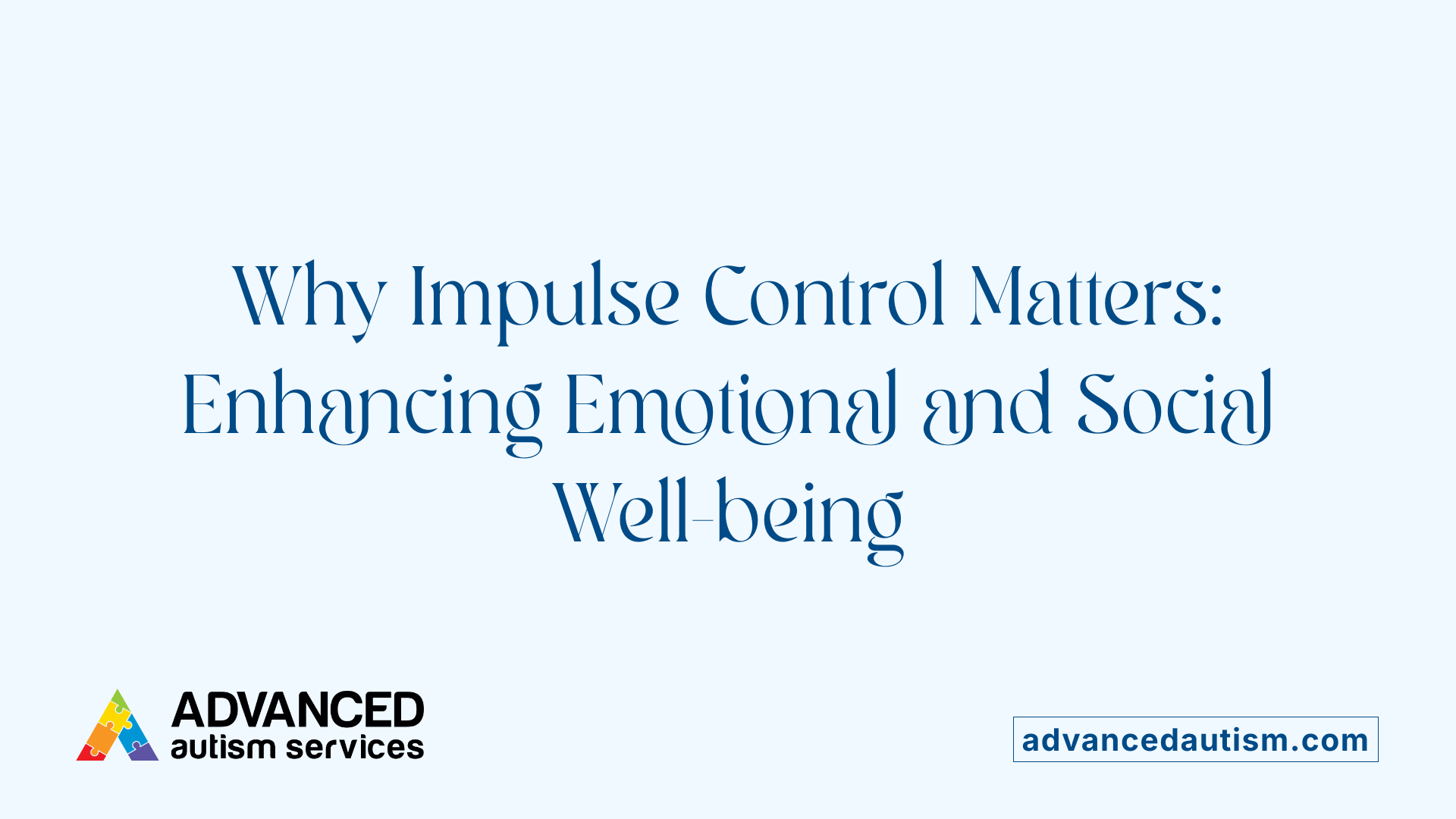
How does impulse control influence emotional well-being?
Impulse control is essential for managing emotions effectively. When individuals can regulate their immediate reactions, they experience less stress, frustration, and emotional outbursts. Developing these skills helps promote a balanced mood and positive mental health, facilitating better coping strategies during challenging situations.
What impact does impulse control have on social and academic success?
In social settings, impulse control helps individuals behave in socially acceptable ways, fostering stronger relationships. It allows for patience, turn-taking, and respectful communication, which are vital for forming and maintaining friendships. Academically, impulse control contributes to focus, following instructions, and completing tasks, all of which are crucial for learning and achievement.
What are the consequences of poor impulse regulation?
Without good impulse control, individuals may face difficulties like acting out aggressively, interrupting others, or struggling to wait their turn. Such behaviors often lead to conflicts, social rejection, and challenges in schools or workplaces. In severe cases, poor impulse management is linked to diagnoses such as conduct disorder, oppositional defiant disorder, and autism spectrum disorder (ASD), which can impede overall development and well-being.
How do structured environments help reduce impulsivity in individuals with autism?
Structured settings play a vital role in managing impulsivity, especially for individuals with autism. These environments provide consistency through clear routines, visual aids, and established rules, creating a predictable atmosphere that reduces surprises and sensory overload. This predictability helps minimize triggers that often lead to impulsive or aggressive behaviors.
Integrating naturalistic teaching strategies like incidental teaching and pivotal response training within these environments encourages spontaneous learning and self-regulation. Personalized approaches, tailored to each individual's strengths and routines, further promote adaptive behaviors. Overall, well-structured environments foster a sense of security, enabling individuals with autism to better control impulses and engage positively in their surroundings.
Core Techniques and Strategies in ABA for Managing Impulses
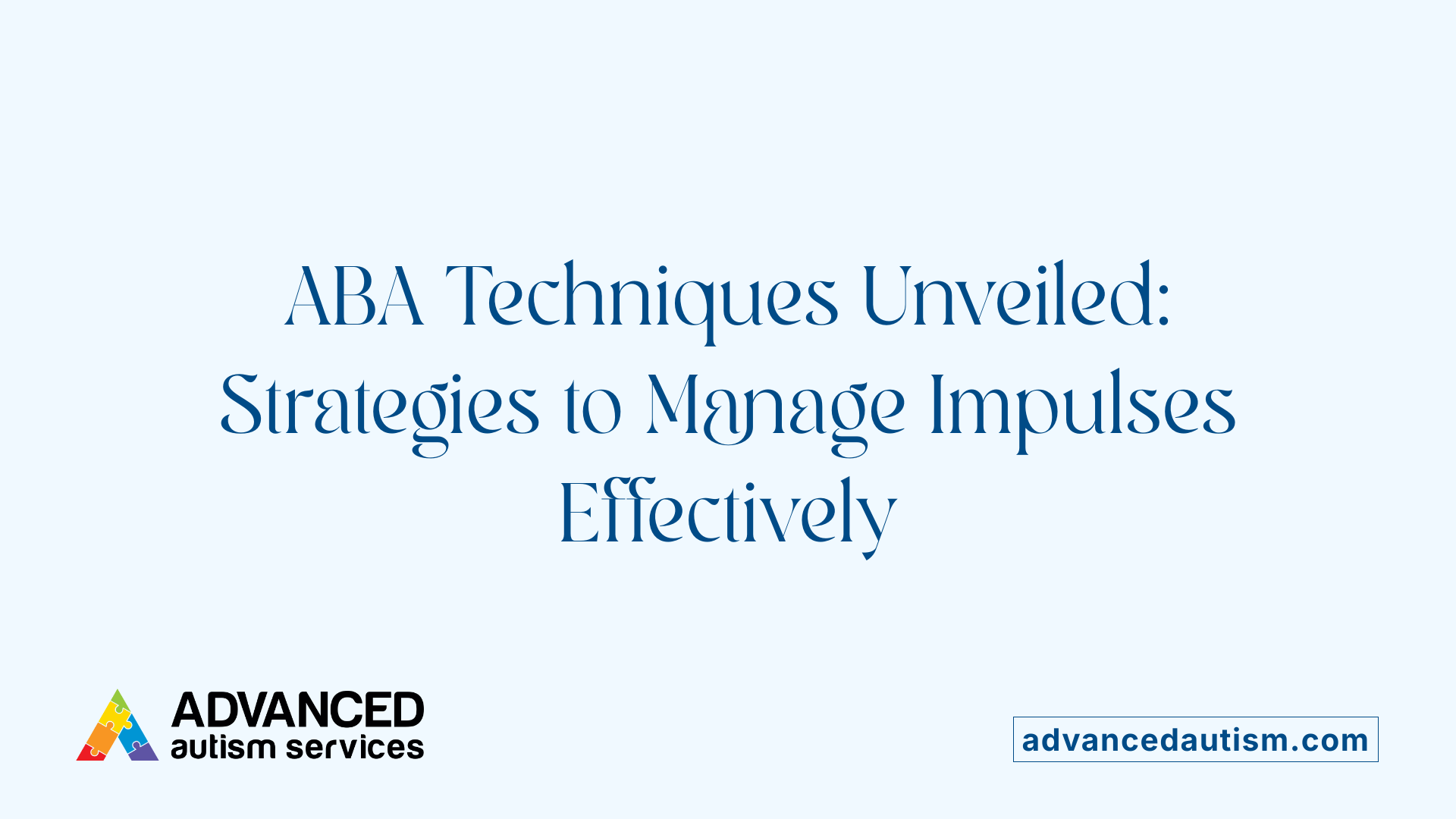
What techniques and strategies are used in ABA therapy to manage impulse-related behaviors?
Applied Behavior Analysis (ABA) employs a range of methods to help individuals improve impulse control and manage aggressive behaviors. Positive reinforcement is a foundational approach, where caregivers and therapists reward desirable behaviors to encourage repeated occurrences. Differential reinforcement of alternative behaviors (DRA) is also critical; it involves reinforcing behaviors that are socially appropriate instead of the problematic impulsive or aggressive actions.
Teaching self-management skills is another essential component. This includes training individuals to monitor their own behaviors and employ self-control strategies like deep breathing, self-monitoring, and waiting techniques. By doing so, individuals learn to regulate their impulses internally.
Modeling and role play are practical techniques used in therapy sessions. Therapists demonstrate appropriate behaviors and rehearse scenarios through role play, helping clients practice new, acceptable responses in a safe environment.
Functional Communication Training (FCT) aims to teach individuals effective ways to communicate their needs, reducing frustration that could lead to impulsive acts. For example, teaching a child to request a break instead of acting out aggressively.
Consistency across settings—therapy, home, school—is emphasized to reinforce learning and ensure behavioral improvements persist. Additional strategies include contingency management systems, which provide tangible rewards (like tokens or points) for appropriate behaviors, and comprehensive behavior intervention plans, which are tailored to the individual’s needs.
Parental and caregiver training is crucial, as it helps generalize skills beyond the clinical setting, creating a supportive environment that promotes better impulse control and emotional regulation.
Efficacy of ABA in Treating Impulsivity, Particularly in Children with Autism
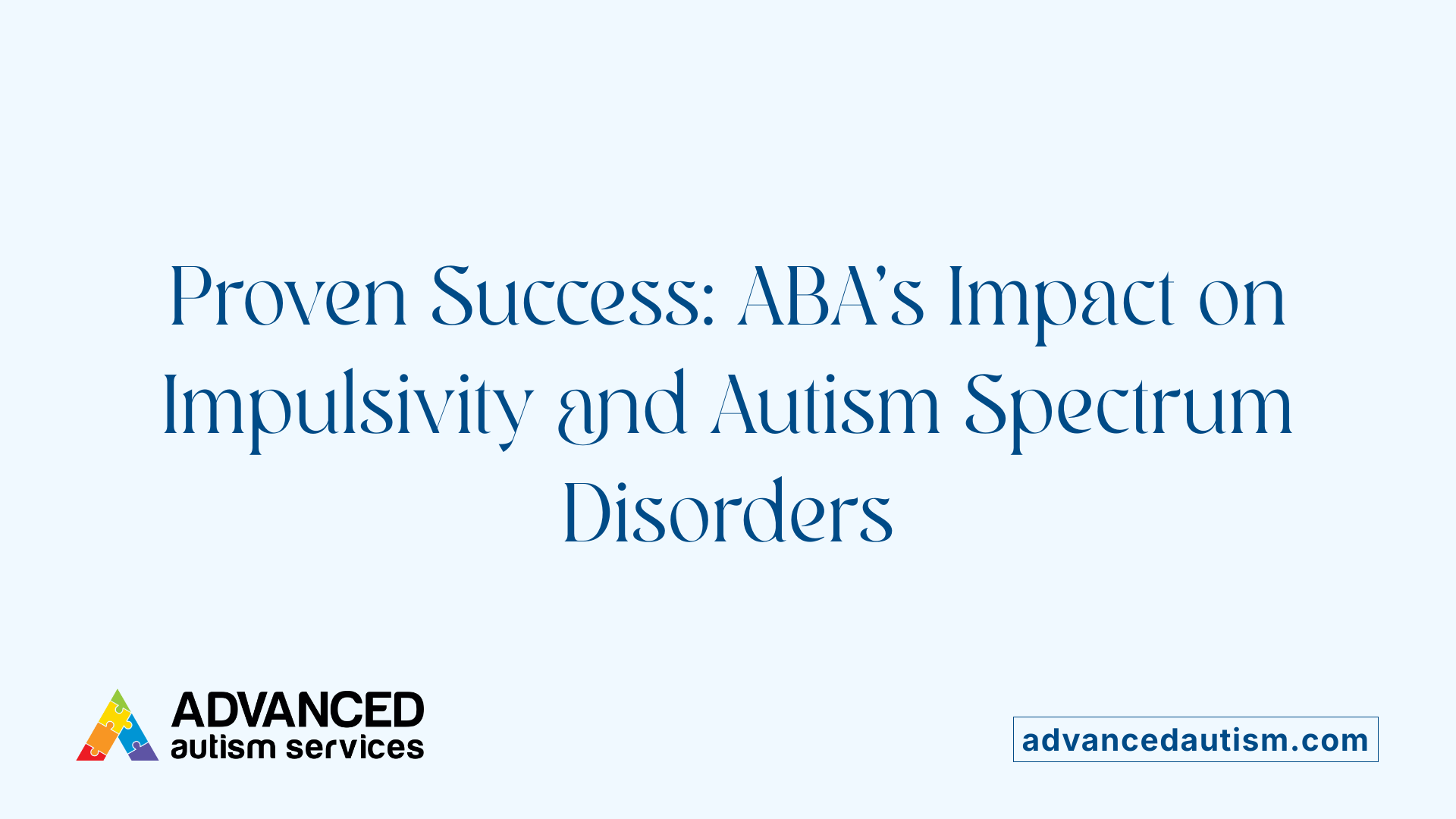 Research indicates that applied behavior analysis (ABA) is a proven method for helping individuals, especially children with autism, improve their impulse control. ABA techniques focus on understanding behavior patterns and applying targeted interventions to promote positive change.
Research indicates that applied behavior analysis (ABA) is a proven method for helping individuals, especially children with autism, improve their impulse control. ABA techniques focus on understanding behavior patterns and applying targeted interventions to promote positive change.
Studies show that reinforcement schedules play a significant role in enhancing self-control. For instance, reinforcing delayed gratification allows children to learn patience and manage impulses better. Using visual cues, timers, and hand signals helps them understand when to wait for a larger reward, thus fostering self-regulation.
An example from recent research involves two young boys with severe developmental disabilities. Both exhibited impulsive aggression reinforced by immediate access to small rewards like food or television. When researchers implemented signals for delaying reinforcement—such as hand gestures or timers—they observed that both boys demonstrated better self-control. Their aggressive behaviors decreased, and they managed to wait for more substantial, delayed reinforcers.
Additionally, ABA strategies such as neutral redirection and positive reinforcement are effective in reducing aggressive and impulsive behaviors. Caregivers are trained to calmly redirect children to appropriate actions without reacting violently, which prevents reinforcement of aggression. Instead, they reward behaviors like asking, sharing, or waiting.
In adult populations, especially within correctional or institutional settings, token economies—where tokens serve as conditioned reinforcers—are used to promote prosocial behaviors. Research from a 2014 study in the Journal of Criminal Justice and Behavior highlights that contingency management systems can increase constructive behaviors and engagement in educational activities.
Overall, ABA therapy's structured approach, combining reinforcement strategies and behavior modeling, can significantly improve impulse control. It teaches individuals to self-regulate through techniques such as deep breathing, self-monitoring, and behavioral shaping. When applied consistently, these interventions encourage thoughtful decision-making and reduce impulsivity and aggression.
In conclusion, the evidence supports that ABA is highly effective in managing impulse control issues, particularly for children with autism. It demonstrates that with the right reinforcement techniques and behavioral strategies, children can learn to control their impulses, leading to better social and emotional functioning.
| Application Area | Techniques Used | Outcome | Supporting Evidence |
|---|---|---|---|
| Children with ASD | Positive reinforcement, shaping, visual cues | Improved self-control and reduced aggression | Study of two boys showing delayed reinforcement increased self-control |
| Adults in correctional systems | Token economies, contingency management | Increased prosocial behaviors | 2014 research in the Journal of Criminal Justice and Behavior |
| General behavioral management | Role play, routines, emotional regulation | Better decision-making, social skills | Numerous validated ABA programs and studies |
This comprehensive understanding demonstrates why ABA remains a cornerstone in intervention for impulsivity, offering tangible benefits for individuals across various age groups.
Addressing Impulses and Aggression in Broader Populations through ABA
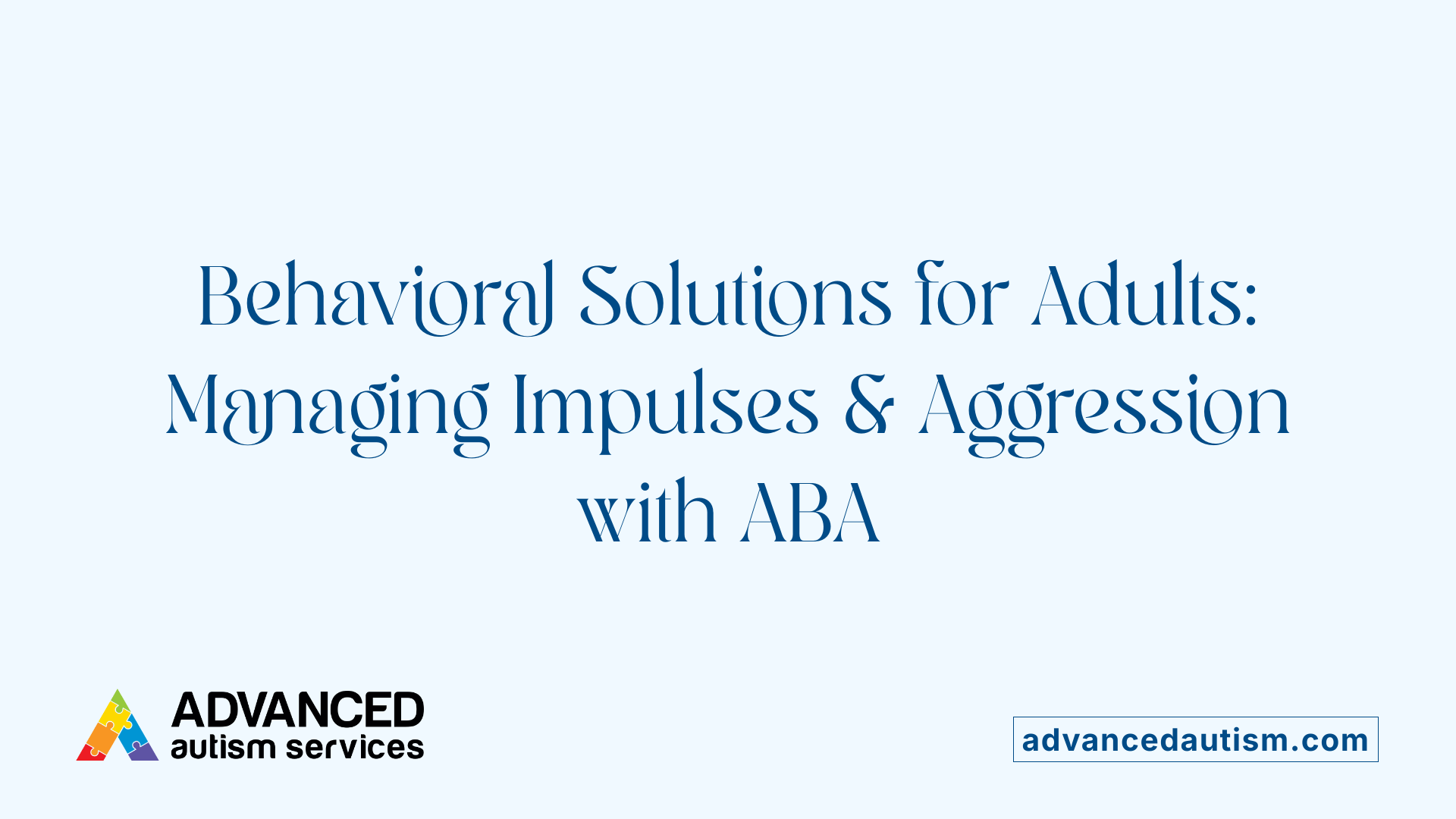
Use of contingency management and token economies in adult populations
Contingency management systems and token economies are widely employed in adult settings, such as criminal justice facilities and healthcare institutions, to promote desirable behaviors. These systems reward positive actions with tokens or points that can later be exchanged for privileges or treats, encouraging sustained behavior change.
Managing aggression and impulsiveness in clinical and institutional settings
In these environments, managing aggression and impulsive behaviors is critical for safety and rehabilitation. Applied Behavior Analysts (ABAs) use strategies like neutral redirection and positive reinforcement to guide individuals towards socially acceptable behaviors. For example, instead of reacting emotionally to aggression, caregivers are trained to redirect the individual calmly without punishment, focusing on reinforcing calm and compliant behaviors.
Research supporting behavioral interventions for adults
Research supports the effectiveness of these interventions. A 2014 study published in the Journal of Criminal Justice and Behavior reported positive outcomes in prison populations, including increased prosocial behaviors and greater participation in educational programs through token economies. These results demonstrate that behavioral systems rooted in ABA principles can promote better impulse control and reduce aggression among adults.
| Aspect | Application | Evidence | Additional Notes |
|---|---|---|---|
| Contingency Management | Rewards for appropriate behavior in adult settings | 2014 Journal study | Used in prisons and care facilities |
| Token Economies | Exchange tokens for privileges | Widely supported | Effective in reinforcing positive behavior |
| Managing Aggressive Behavior | Neutral redirection and positive reinforcement | Research-supported | Focus on non-punitive techniques |
| Research Outcomes | Improved social behavior and compliance | Multiple studies | Indicate long-term benefits |
These approaches highlight how ABA techniques adapt across age groups and settings, emphasizing the importance of tailored strategies to improve impulse control and manage aggression effectively.
Structured Teaching and Parent Involvement in ABA for Impulse Regulation
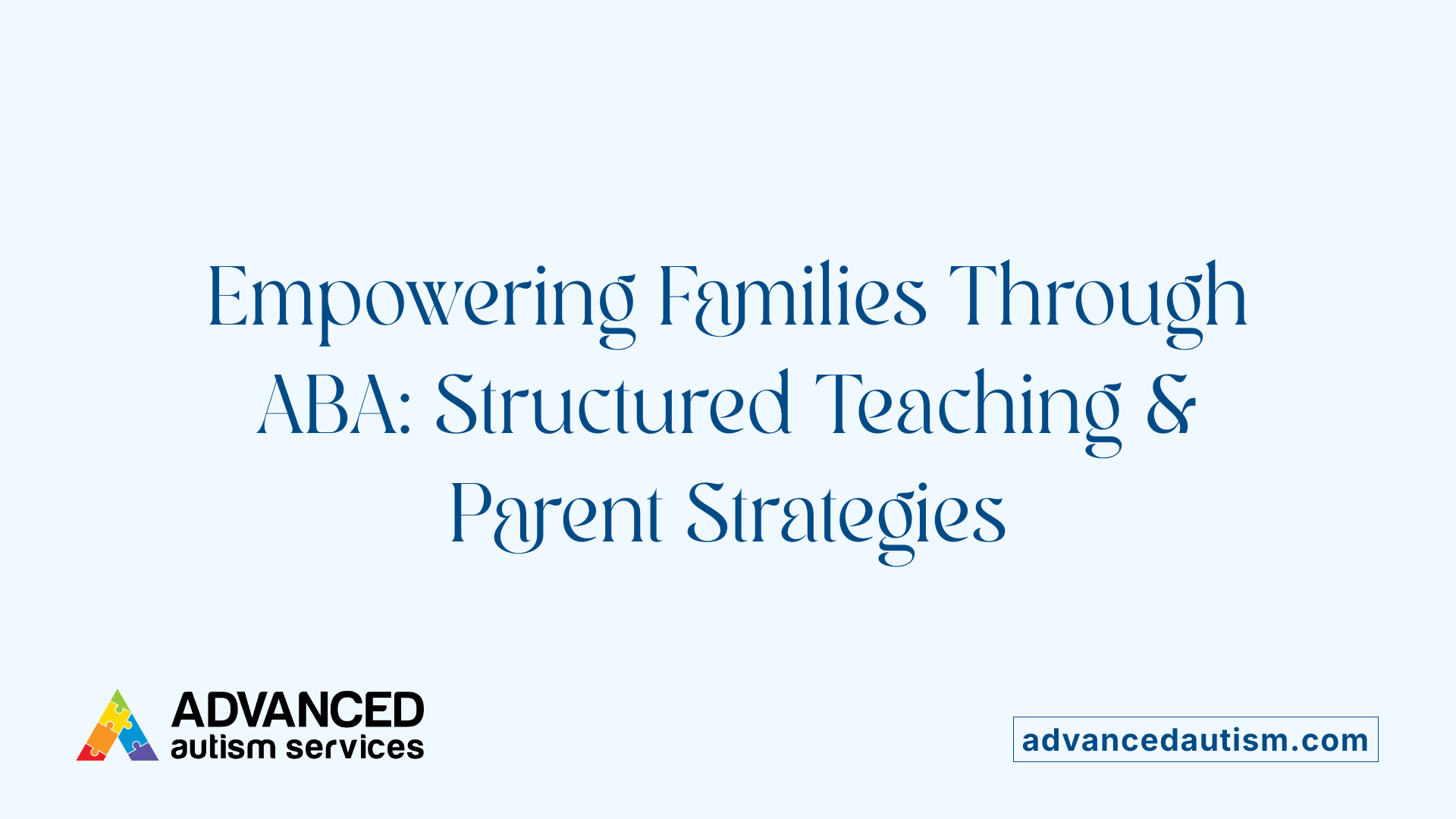
Implementing visual aids, routines, and rules
Using visual aids, such as charts or picture schedules, helps children understand expected behaviors and routines. Establishing consistent rules and rituals provides predictability, reducing impulsive reactions. Visual supports and structured routines serve as clear cues that guide children’s actions, improving their ability to pause and think before acting.
Training caregivers and family members in behavior strategies
Empowering parents and caregivers with ABA techniques is vital. Through parent training programs, families learn to implement strategies like neutral redirection—calmly guiding children away from unwanted behaviors without punishment—and reinforcement methods that encourage positive actions. Consistent application at home reinforces the child's learning and promotes generalization of impulse control skills.
Personalized interventions based on individual needs
Every child’s behaviors and triggers are unique. Tailored interventions consider each child's developmental level, behavioral patterns, and specific challenges. ABA specialists develop individualized plans that might include teaching waiting skills, emotional regulation techniques like deep breathing, and shaping behaviors with praise for non-aggressive and self-controlled actions.
Naturalistic teaching methods and natural environment training
Naturalistic approaches embed teaching within everyday activities. Conducted in real-life settings, these methods promote spontaneous decision-making and self-regulation. For example, during play or routine tasks, therapists and caregivers model desirable behaviors, reinforce patience, and reward appropriate choices, making learning relevant and effective.
Combining these strategies involves close collaboration between professionals and families. When caregivers are trained and involved, children gain consistent support across settings, greatly enhancing their impulse control and social skills.
Empowering Individuals with Better Impulse Control through ABA
ABA therapy offers comprehensive, evidence-based strategies to improve impulse control across developmental stages and settings. Through structured environments, reinforcement techniques, and skill development, ABA enables individuals, especially those with autism, to manage impulses more effectively, leading to better social integration and emotional stability. As research continues to validate its effectiveness, ABA remains a cornerstone of intervention for impulsivity, emphasizing individualized approaches and caregiver involvement to foster lasting behavioral improvements.
References
- Curbing Impulses: 7 Strategies for Teaching Impulse Control
- Applied Behavior Analysis in Treating Aggression and Impulse ...
- ABA in the Treatment of Aggression and Impulse Control
- Can ABA Help With Impulse Control? | Childwise
- Evaluating self-control and impulsivity in children with severe ...
- Broken Arrow - Provider Directory - Oklahoma Autism Network
- Naturalistic Teaching Strategies In ABA Therapy
- [PDF] Bill Analysis and Fiscal Impact Statement - Florida Senate
- Delusional Disorder
- Conduct Disorder



